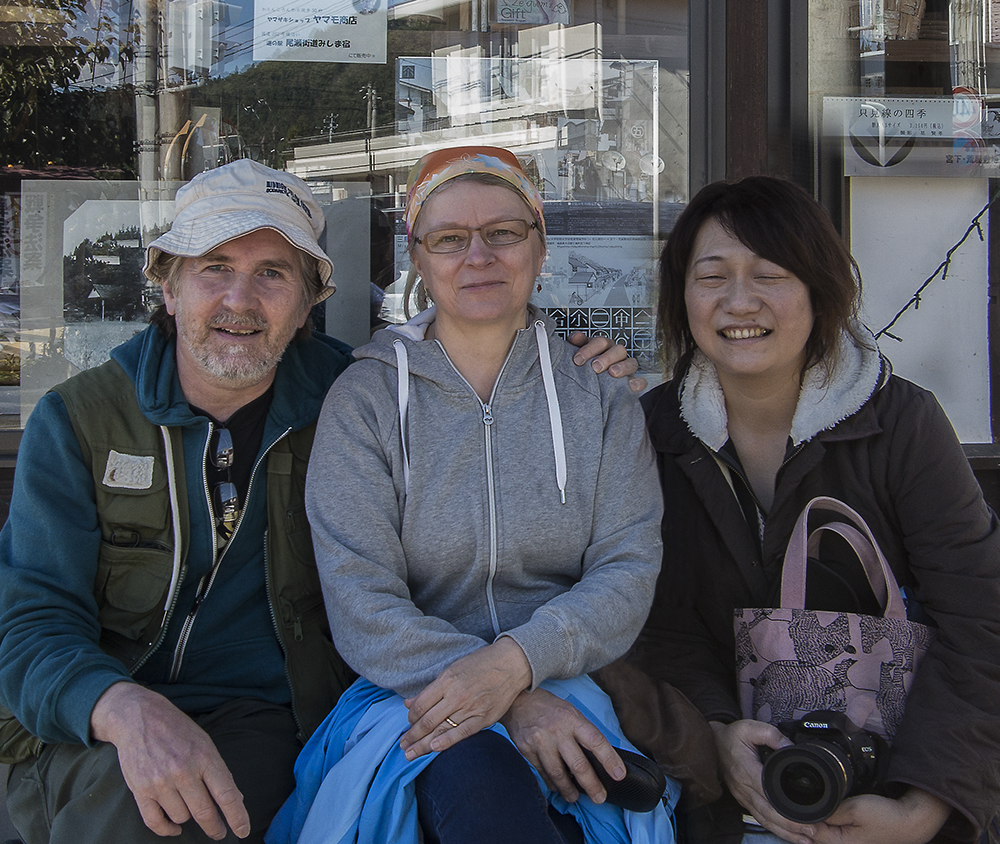NAOKO CHIBA
Photographer Naoko Chiba was born in Iwate, Tōhoku, in 1972. She has studied visual arts and art education in University of Iwate and in Institute of Contemporary Art in Gunma.
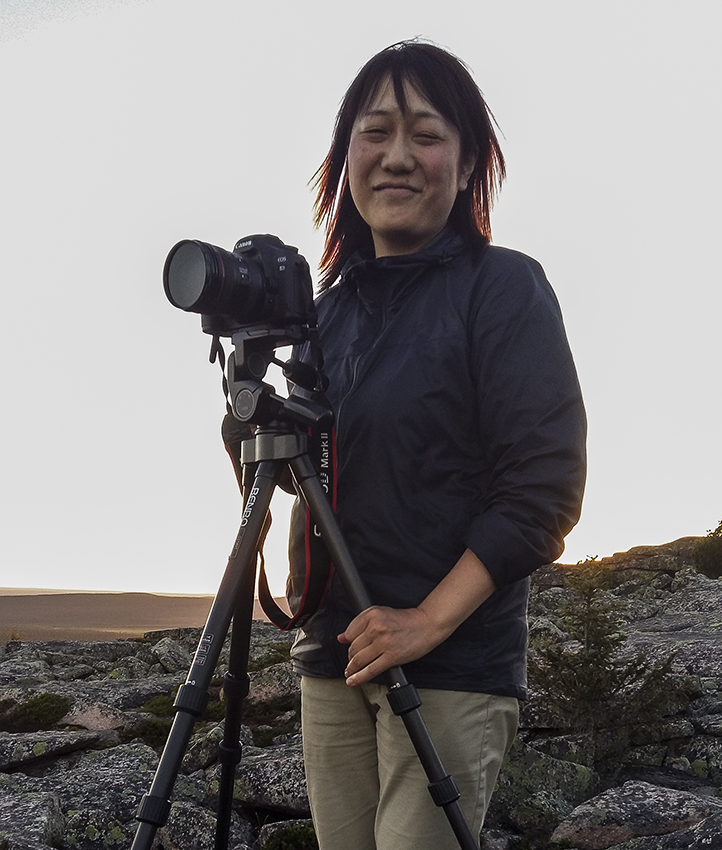
Naoko Chiba is currently based in Sakata City, Yamagata Prefecture. Since 1998, she has worked on My Father’s House, a photographic series and lifelong labor of love that documents an old house and the surrounding village in a depopulated area of Iwate.
Using early photographic techniques such as cyanotype printing and gelatin silver prints, she continues to explore the history and background of the lifestyle and land long shared throughout the Tohoku region, the northern part of Japan. Chiba’s photographs and essays highlight the changes to the rich life and culture of the north in the face of modernization and nature disasters.
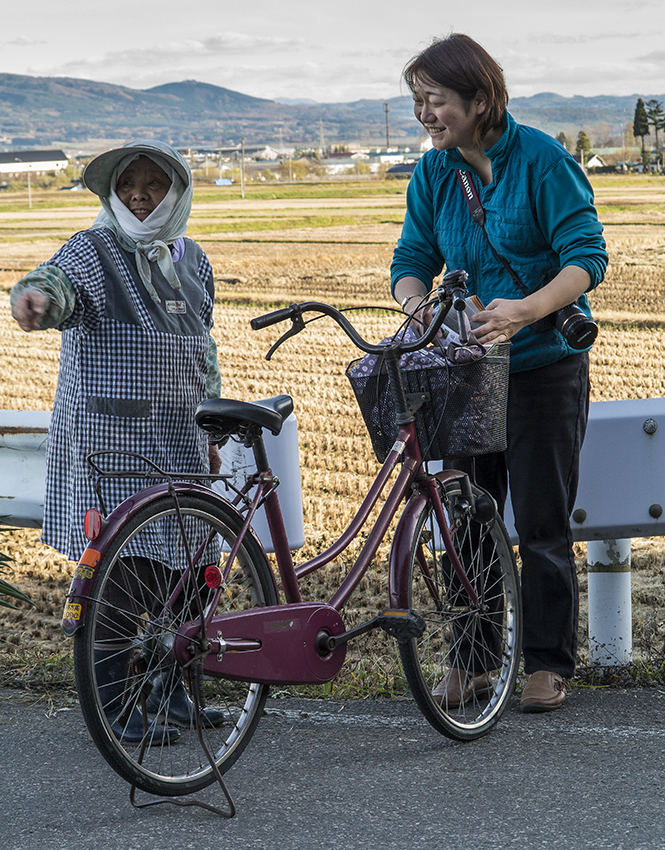
Naoko Chiba interviewing a local resident in Kitakata, Japan. Photo: Antti Ylönen
Her artworks include for example Seaside Town, a work in which she repeatedly visited Minamisoma, Fukushima Prefecture, to experience the local culture, talk to residents, and photograph the area for seven years following the Great East Japan Earthquake in 2011; and Northern Lights, in which she visited Lapland in Finland in search of traces of regional culture and documented the small village of Mutenia, which was deserted after the construction of a dam in the 1960s. She also teaches photography techniques as a workshop lecturer at museums throughout Japan.
Naokos webpage: https://www.photo-chibanaoko.com/

Part of the photo series ‘My Father’s House’ by Naoko Chiba. Exhibition in Kitakata 2015. Photo: Kaisa Kerätär.
ANTTI YLÖNEN
Antti Ylönen began his career in the mid-1980s as a ceramic artist. However, as time passed, he has shifted his focus more towards sculptural expression and changed his medium from clay to wood. The primary themes in his artwork revolve around time and emotion. He has also spent several working periods abroad, including Turkey, India, Spain, and Italy.
He has worked in Japan on several occasions, including two artist residencies at Youkobo Art Space in Tokyo. In 2003, he spent two months in Minamisoma creating a public wooden sculpture for the local concert hall. As a sculptor, his most recent visit was to Denmark in October 2021, where he created an environmental art piece at TICKON-Tranekaer International Centre for Art and Nature.
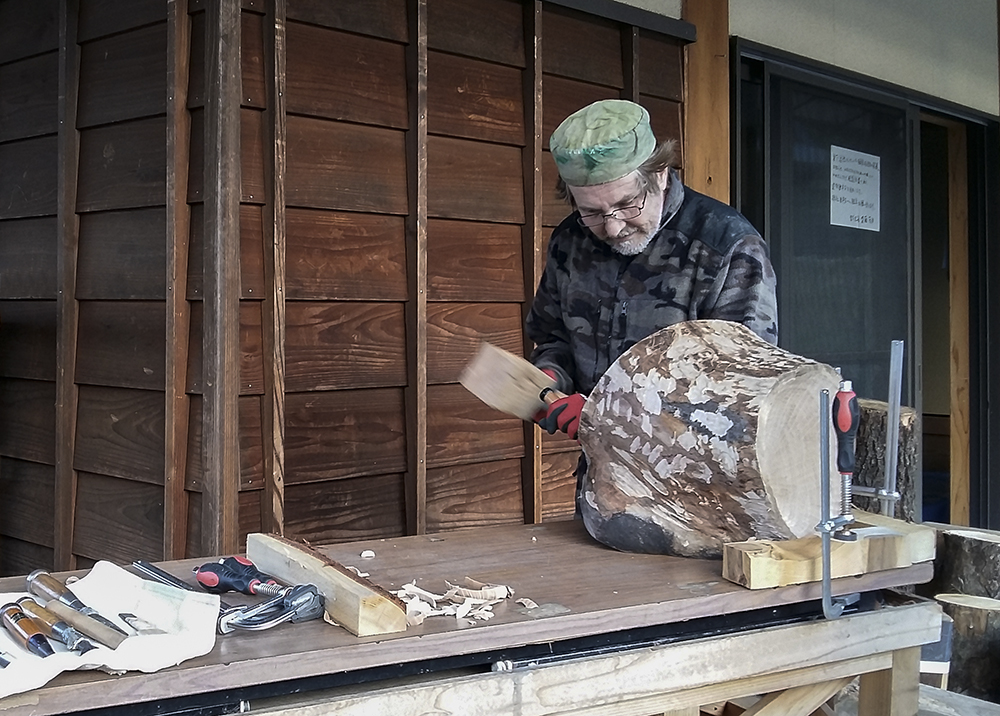
In Japan, Antti Ylönen has been carving special local wood like kiri, Paulownia tomentosa. Photo: Kaisa Kerätär
Photography has become an important part of the artist’s expression in recent years, alongside his sculptures. His first appearance as a photographer was at the Northern Photograph Center in Oulu, Finland. His work was exhibited in a show called Silent Stories of Land, which he shared with Naoko Chiba.
’My photos are a kind of photographic paintings or urban nature photographs. I observe the details around me, found mainly in the built environment, which is often associated with decay and decomposition.’
Antti’s webpage: www.anttiylonen.fi/
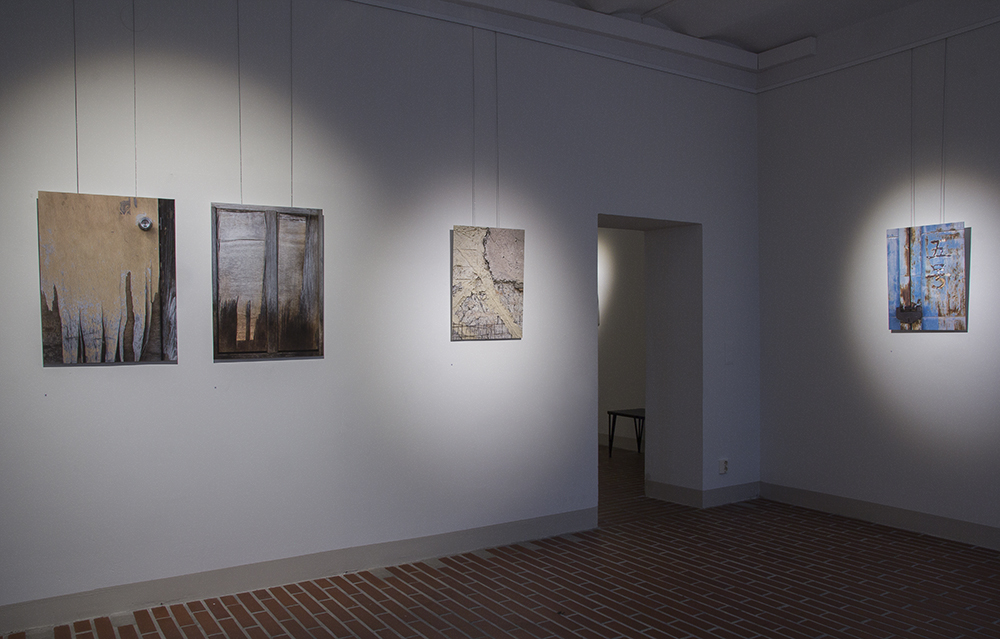
Part of the photo series ‘Kitakata’ by Antti Ylönen. Exhibition at Northern photographic gallery, Oulu, 2018. Photo: Antti Ylönen.
KAISA KERÄTÄR
Kaisa Kerätär is a biologist, curator, writer, and storyteller interested in the history, identity, traditional ecological knowledge, and storytelling traditions of sparsely populated northern regions.
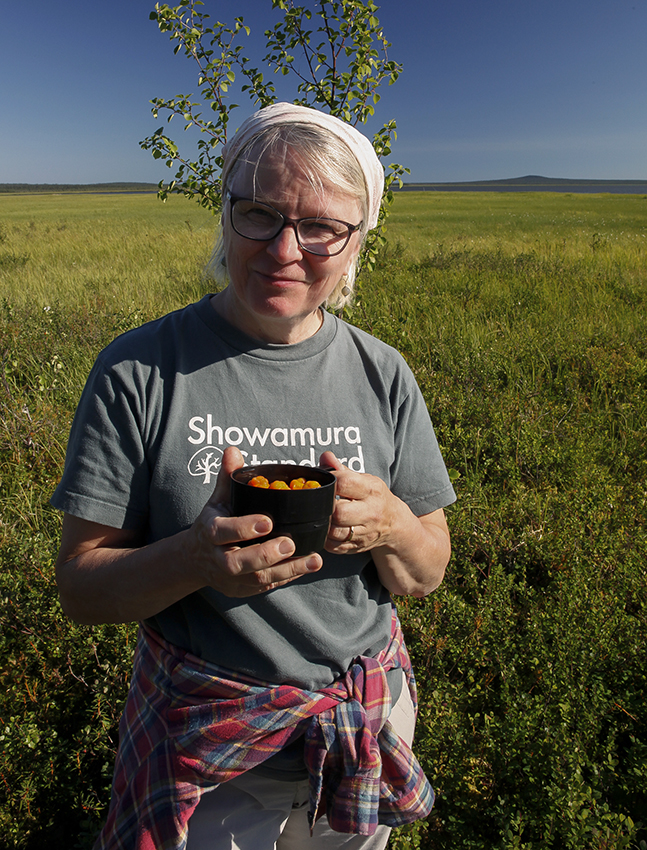
Picking berries is one of the traditional livelihoods in Lapland wilderness. Photo: Naoko Chiba.
Since 2021, together with the global transdisciplinary network LandBodyEcologies (LBE), recipients of the Wellcome Trust’s Hub Award, Kaisa has been exploring solastalgia, i.e. distress emerging from environmental change and the deep interconnections of mental and ecosystem health. Her articles have been published in blogs and northern culture magazines dealing with environmental issues.
Kaisa Kerätär is from Finnish Lapland, and has her family roots in the Forest Lapp (Sámi) culture. This culture has a strong tradition of nature-based livelihoods such as hunting, fishing, and reindeer husbandry, which have been sustained locally for centuries. Since 2002, Kerätär has been initiating and coordinating numerous collaborative contemporary art projects between northern Japan and northern Finland.
Kaisa’s webpage: www.artbreak.fi
